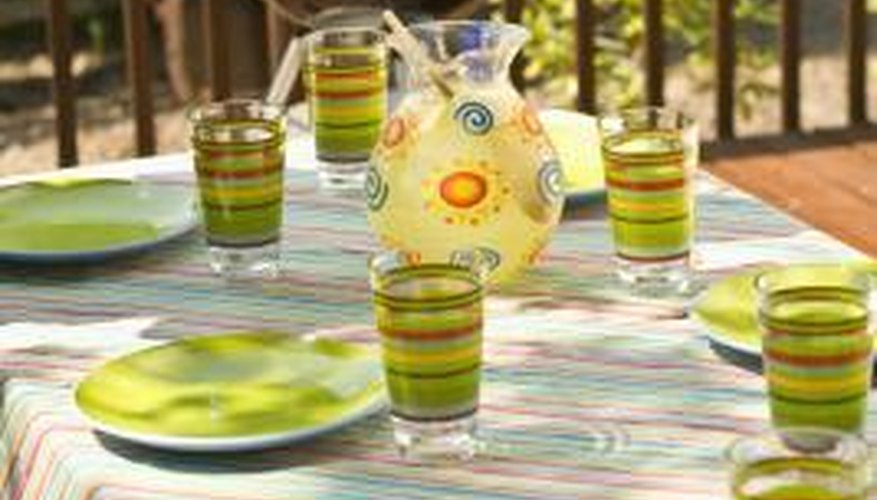The tablecloth serves several purposes that are both aesthetic and practical. It protects the finish of your tablecloth and can transform the mood of a room through your choice of colour, design and fabric. Every tablecloth is made slightly larger than the table itself to allow for a certain amount of overhang.
Fitting a Tablecloth
Most kitchen and dining tables are designed in oval, round and rectangular shapes. The standard overhang for a tablecloth is not set in stone, but rather an implied custom that varies based on sources. In terms of practicality, too little overhang doesn't allow for much movement of the tablecloth, which can make the surface beneath visible if it's pulled slightly. Too much overhang, on the other hand, can lead to someone pulling it if it clings to their trousers or accidentally pulling it as they are seated.
- Most kitchen and dining tables are designed in oval, round and rectangular shapes.
- In terms of practicality, too little overhang doesn't allow for much movement of the tablecloth, which can make the surface beneath visible if it's pulled slightly.
Standard Overhang
Houseware retailer Bed Bath & Beyond suggests that a tablecloth overhang should be somewhere between 6 and 10 inches. That number varies among retailers, with some saying to add more than 10 inches. The overhang is a choice of personal preference. A longer drop typically means a more elegant look, which is why Good Housekeeping recommends a 10- to 12-inch drop for a casual setting and 15-inch drop for formal settings.
- Houseware retailer Bed Bath & Beyond suggests that a tablecloth overhang should be somewhere between 6 and 10 inches.
- A longer drop typically means a more elegant look, which is why Good Housekeeping recommends a 10- to 12-inch drop for a casual setting and 15-inch drop for formal settings.
Banquet tables
Banquet tables, which are typically utilised for serving food, are another important element in fitting a tablecloth. Since no one sits to eat at a banquet table, the tablecloth should be long. The longer the tablecloth, the more elegant it will appear. A drop of up to 30 inches may be necessary for the average banquet table. This also allows you to store items and supplies underneath the table without anyone noticing, and adds a certain element of decoration.
- Banquet tables, which are typically utilised for serving food, are another important element in fitting a tablecloth.
How to Size
When in doubt always overmeasure the tablecloth. Start by measuring the length and width of your tablecloth. For a round table, add the amount of overhang you want to the diameter of the tablecloth. For rectangle and oval tablecloths, add anywhere from 12 to 30 inches to the table length and width to get an estimation of the minimum size you need for your table. Tablecloths are available in a wide variety of materials that include, plastic, vinyl, linen, cotton blends, polyester and microfiber.
- When in doubt always overmeasure the tablecloth.
- For rectangle and oval tablecloths, add anywhere from 12 to 30 inches to the table length and width to get an estimation of the minimum size you need for your table.
